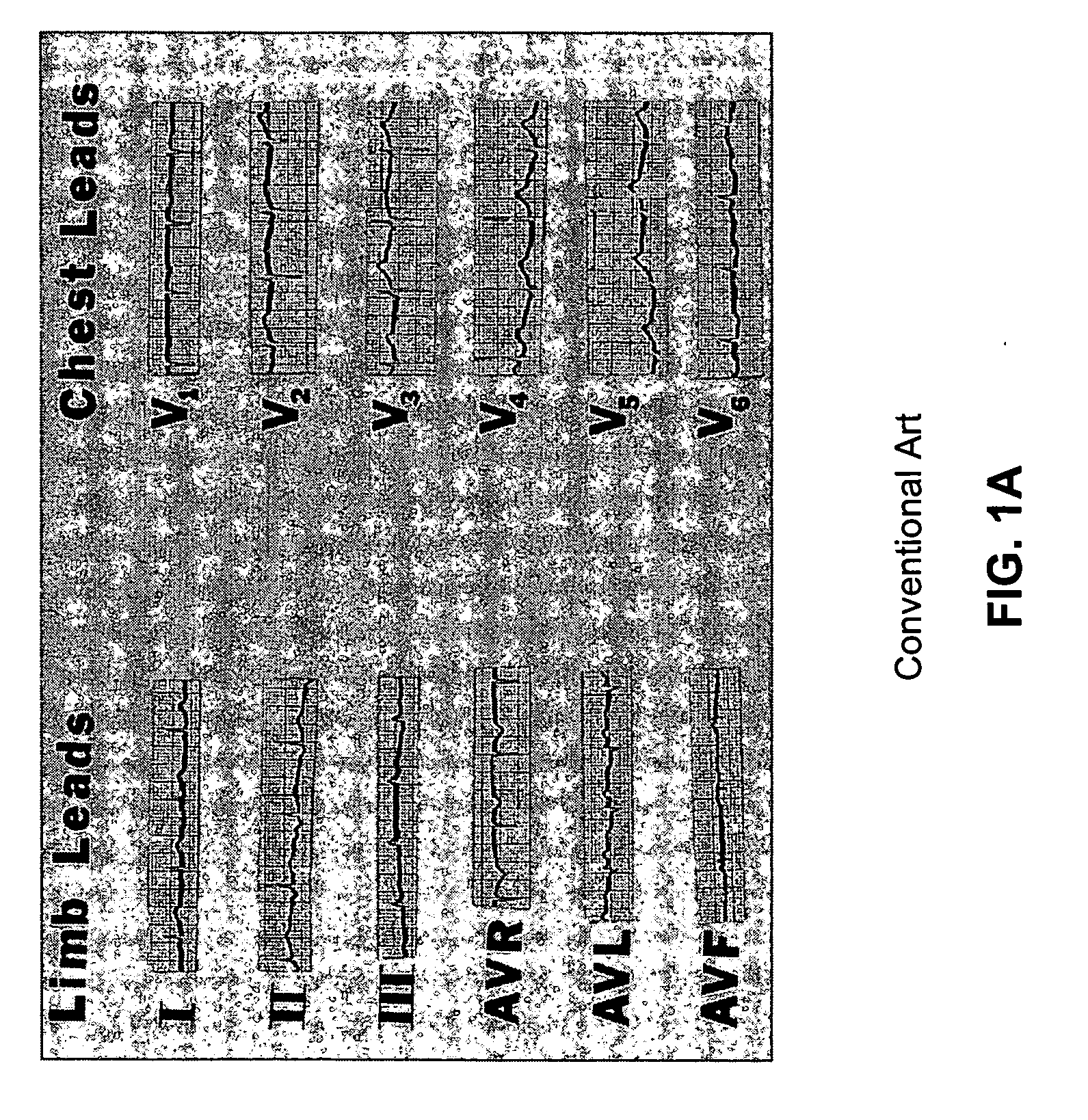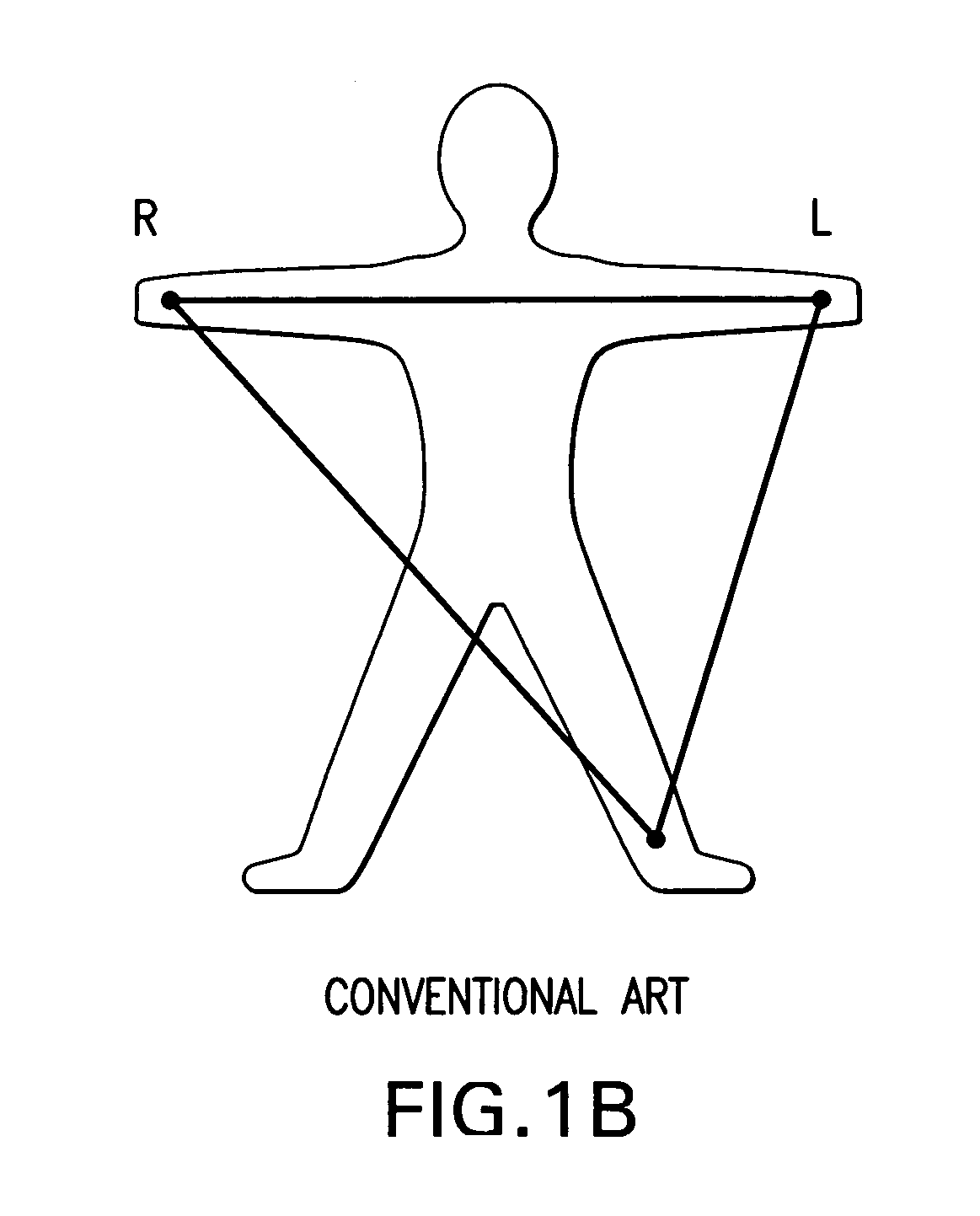Differentiating ischemic from non-ischemic T-wave inversion
a technology of ischemic and non-ischemic twaves, applied in the field of electrocardiography, can solve the problems of ischemia, no reliable diagnostic mechanism has been described to differentiate pacing-induced cardiac memory from t-waves, and the causal relationship of these two phenomena is often obscured
- Summary
- Abstract
- Description
- Claims
- Application Information
AI Technical Summary
Benefits of technology
Problems solved by technology
Method used
Image
Examples
Embodiment Construction
[0027] Reference will now be made in detail to the preferred embodiments of the present invention, examples of which are illustrated in the accompanying drawings.
[0028]FIGS. 1A-1E illustrate the terminology used in cardiography, and FIG. 2 shows exemplary electrocardiogram (ECG) traces.
[0029]FIG. 1A illustrates representative ECG waveforms taken from the twelve standard surface leads, the six limb leads numbered I, II, III, aVR, aVL and aVF, and the six chest leads, also known as precordial leads, V1-V6. FIG. 1B shows positioning of the limb leads I, II and III. FIG. 1C illustrates the connections for the limb leads I, II and III. Lead I has a horizontal axis, going from right to left. Lead aVF has a vertical axis, and goes top to bottom. Leads I and II are approximately 30° apart. Lead II is approximately 60° down from right to left. FIG. 1D illustrates the connections for limb lead aVF. FIG. 1E illustrates the connections for the limb leads aVL and aVR. FIG. 1F illustrates the p...
PUM
 Login to View More
Login to View More Abstract
Description
Claims
Application Information
 Login to View More
Login to View More - R&D
- Intellectual Property
- Life Sciences
- Materials
- Tech Scout
- Unparalleled Data Quality
- Higher Quality Content
- 60% Fewer Hallucinations
Browse by: Latest US Patents, China's latest patents, Technical Efficacy Thesaurus, Application Domain, Technology Topic, Popular Technical Reports.
© 2025 PatSnap. All rights reserved.Legal|Privacy policy|Modern Slavery Act Transparency Statement|Sitemap|About US| Contact US: help@patsnap.com



